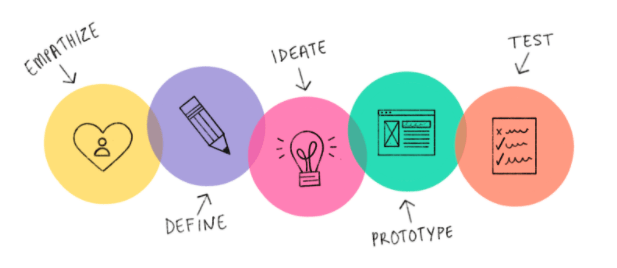How to Apply Design Thinking to Your Employee Promotion Process

When you think of a company’s culture, you might think of the people, the perks, or the image of foosball and dogs playing in the office. At Classy, we’ve not only built an engaging and exciting culture, but we have also instilled one of learning and growing. We strive to create room for employees to fail, improve, grow, and continually learn from each other.
In 2020, we received feedback that our company promotion process wasn’t working in the way we initially intended. There were inefficiencies, redundancies of efforts, and inconsistencies in what it really meant to promote and up-level a Classy employee. We knew we had to change our process to mirror how the company had changed and evolved over the years.
Enter Classy’s Promotion Tiger team: a cross-functional, collaborative task force of passionate employees and leaders who were committed to improving Classy’s process for employee promotions. Our promotion process was not any one person’s responsibility to own, but Classy as a whole to help solve.
In addition to the tiger team, we collaborated with our vice president of product and design to apply a design thinking methodology to tackle our challenges. Commonly used in product and design organizations, design thinking is a process for creative problem-solving with a human-centered, empathetic core. It encourages organizations to empathize with the people they’re creating for, which leads to better products, services, and internal processes.
Download Now: The Leader’s Guide to Motivating Employees
Design Thinking Process

Our People team (who had never used a method like this before) felt like we were embarking into uncharted territory, which was both very exciting and scary at the same time.
Here’s what we did:
1. Empathize
Before we could define the problem, we needed to hear from those actually involved in the process and gather feedback to understand the true concerns from those who have experienced them. We took two main steps:
- Survey: We sent a brief survey to employees, managers, and leaders to provide both quantitative and qualitative feedback (e.g. How would you rate our current promotion process on a scale of 1 to 5? What is working with the process? What isn’t?).
- Focus Group: We invited some of those employees to a focus group to dig even deeper into the feedback, explore both positive commentary and constructive criticism of the process, and discuss those thoughts live with the group.
2. Define
Using the information gathered, we sat down to understand the root cause of the feedback and define the actual problem. We went through each piece of feedback and tagged it to a recurring theme. In the process of doing so, we learned that many of the pieces of feedback stemmed from other underlying issues. Rather than tackling each comment in a silo, we wanted to tackle the root causes of the feedback. We ended up creating a project scope document outlining the two key feedback themes:
- There is an opportunity to streamline our promotion process to create a more efficient, transparent, and smooth experience for all stakeholders.
- There is an appetite for increased education and training for our managers on how to better identify how to recognize, reward, and elevate talent.
3. Ideate
We then worked with our tiger team to come up with ways we could tackle the problem. We spent a few hours listing ideas under each theme until narrowing it down to what felt both ideal and realistic, resulting in five major takeaways for next steps.
We realized we couldn’t solve everything at once, but honed in on the small, but impactful changes we could make now. At the same time, we are keeping the other ideas in our backpocket to review at a later date in our next iteration.
4. Prototype
From a cloud of ideas came an actual concept for a revamped employee promotion experience which we outlined in a new process document that was shared with all of our managers. Our main action items included:
- To help create a more streamlined experience, we added more structure to our process and simplified our promotion request form to make it less painful and more meaningful for managers to fill out.
- To help increase education for managers, we plan to host an info session before every promotion review and also weave educational tips on how to recognize talent in our other programs.
5. Test
We applied the changes to our process and launched our revamped promotion cycle in December.
What We Learned
Q: What is design thinking and why is it useful?
A: Design thinking is a process for creative problem-solving with a human-centered, empathetic core. It encourages organizations to empathize with the people they’re creating for, which leads to better products, services, and internal processes.
We have only just started testing our new prototyped process, but the goal is to continue to go back and refine our challenges and test new solutions to meet the needs of our employees. We learned that something as small but mighty as revamping how we promote employees felt better with input of all of our stakeholders.
It’s also okay if you can’t make all changes at once or meet the concern of every person. Going through this process allowed us to create a blueprint for the future and continue to evolve our process as we grow with our employees.

A Leader’s Guide to Motivating Employees



